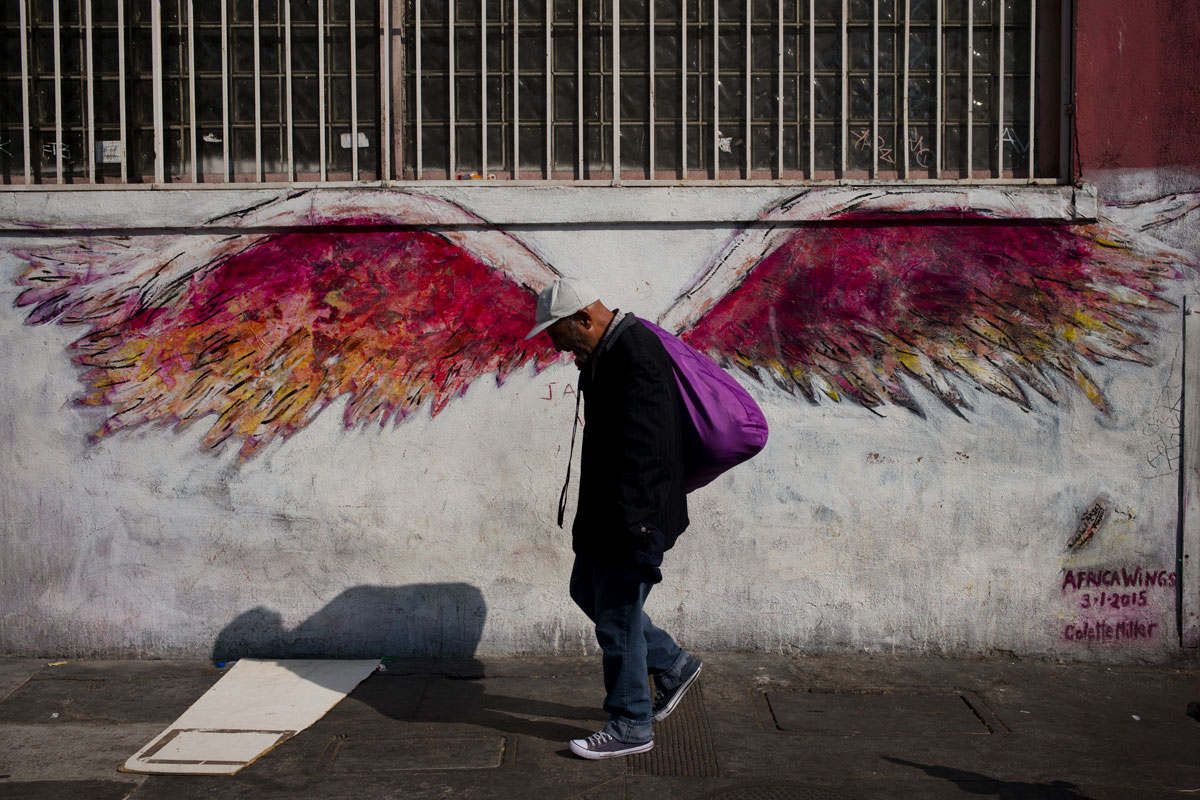This post is part of Unsheltered, an Alliance blog series to exploring the crisis of unsheltered homelessness in the United States. You can catch up on the whole series here.
In 2017, New York City unveiled an aggressive new plan to address homelessness. The plan, Turning the Tide on Homelessness, includes a renewed focus on ending unsheltered homelessness. It expanded the City’s Homeless Outreach and Mobile Engagement Street Action Teams (HOME-STAT) to conduct outreach with unsheltered individuals. Since 2016, the City and its partner organizations have moved nearly 2,000 New Yorkers off the streets with the support of HOME-STAT teams.
How Has New York City Made Progress on Unsheltered Homelessness?
Under the new strategy, the New York City Department of Homeless Services expanded and improved outreach efforts to unsheltered individuals. With additional resources, they adopted new strategies including:
- Partnering with community-based organizations to provide outreach services in all five boroughs and the city transit system
- Nearly doubling outreach staff at partner organizations
- Ensuring outreach occurs 24/7, year-round, by teams that include licensed clinical social workers
- Involving employees of other city agencies — like police, parks, and transit agencies — in outreach activities
- Developing a new data management system in collaboration with outreach staff to better track unsheltered individuals
- Using a “by-name” list of all unsheltered individuals to improve coordination
- Expanding use of drop-in centers to provide basic needs to people on the street (e.g. food, showers) which facilitates engagement with people living outside the shelter system
- Providing expanded mobile and voluntary psychiatric and medical assessments and treatment to people living outdoors
- Partnering with hospitals to reach unsheltered users of emergency room care
- Monitoring the outcomes of outreach services to determine whether individuals being served are achieving permanent housing
How Is New York City’s Homeless Services Infrastructure Keeping Up With Expanded Outreach?
New York City has broadened the scope of shelter and housing options it offers to serve individuals unwilling or unable to reside in more traditional shelter programs. This approach incudes:
- Increasing low-barrier shelter and Safe Haven programs to provide long-term temporary housing with wraparound services
- Increasing temporary “housing stabilization beds,” most of which are structured like Single Room Occupancy (SRO) units to offer single adults who desire more independent settings private units
- Expanding permanent housing capacity using a variety of tools, including short-term and permanent housing subsidies and new development of affordable housing and permanent supportive housing
- Increasing case managers and housing specialists and ensuring they collaborate to help individuals identify appropriate housing options
Are These New Strategies Working?
One of the largest decreases in unsheltered homelessness occurred in the Bronx, where the 2018 Point in Time count of unsheltered individuals measured a 53 percent drop since 2017. Bronxworks is a community-based organization providing expanded outreach services thanks to new resources from New York City’s Department of Homeless Services. Bronxworks credits the following strategies as among the reasons for their success:
- Focusing on all unsheltered individuals, not just those experiencing chronic homelessness
- Expanding case managers and housing specialists to help unsheltered individuals find permanent housing
- Providing outreach workers flexibility to “match” individuals with the type of emergency shelter or transitional housing best suited to their needs
- Increasing availability of Safe Haven beds and improving accessibility by locating Safe Haven units throughout the City and where they are in greatest demand
- Targeting outreach to locations such as emergency rooms, which can also reduce hospital admissions and provide cost savings to the City
- Maintaining connections with individuals after a housing placement for at least 90 days to promote housing stabilization
Embracing Success and a Sobering Reality
With these strategies, New York City has moved nearly 2,000 individuals permanently off of the streets. Few, if any, have returned. The effort has demonstrated what has long been known — ending homelessness is achievable.
There is also a sobering reality which must be confronted: As nearly 2,000 individuals exited unsheltered street homelessness citywide over the last two years, other individuals joined the ranks of those living without shelter. On average, community-based organizations are helping nearly 300 individuals exit unsheltered homelessness each month, but the number of unsheltered individuals overall appears to have declined only slightly.
Unsheltered individuals in New York City are not a static population. Today’s unsheltered population includes many who became homeless only recently, or who have intermittent episodes of homelessness. For whatever reason, they are not entering or maintaining connections to the City’s shelter options for single adults, but are choosing to work with the outreach teams to identify temporary and permanent housing placements.
New York is a unique city in almost all respects. But the scope of these efforts will unearth valuable insights, lessons, and opportunities for countless other communities working to end unsheltered homelessness.
Stay Updated: Solutions, Stories, and Ways to Make an Impact
Sign up to receive updates on the Alliance’s work, including the latest research, advocacy efforts, and real stories of progress — plus ways you can help drive lasting change.














